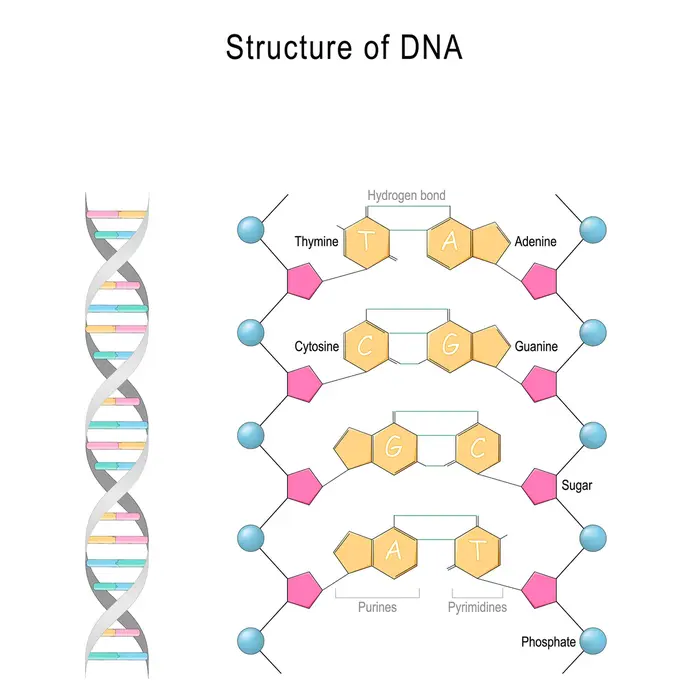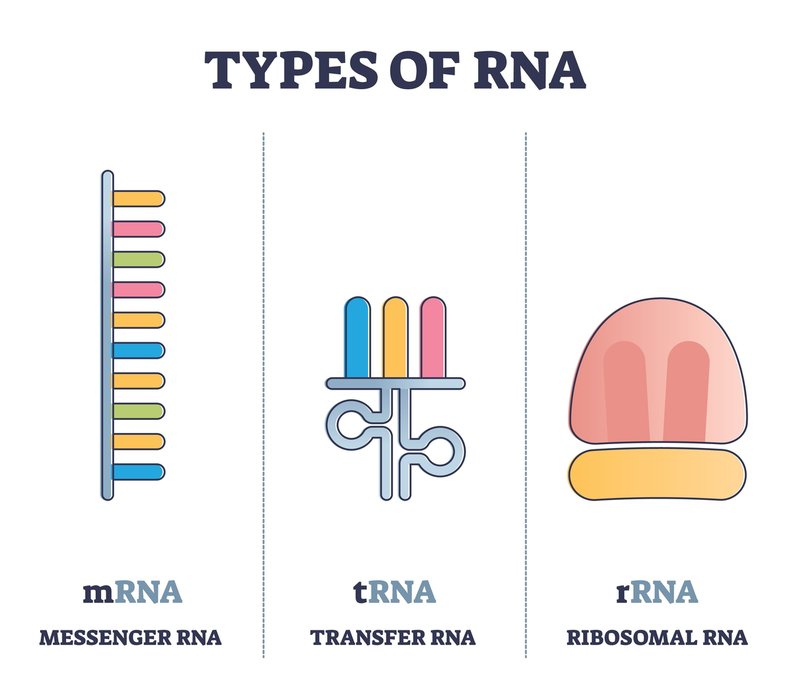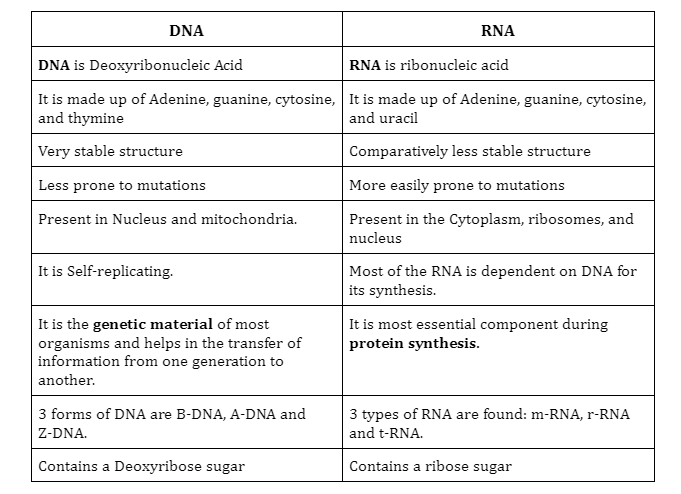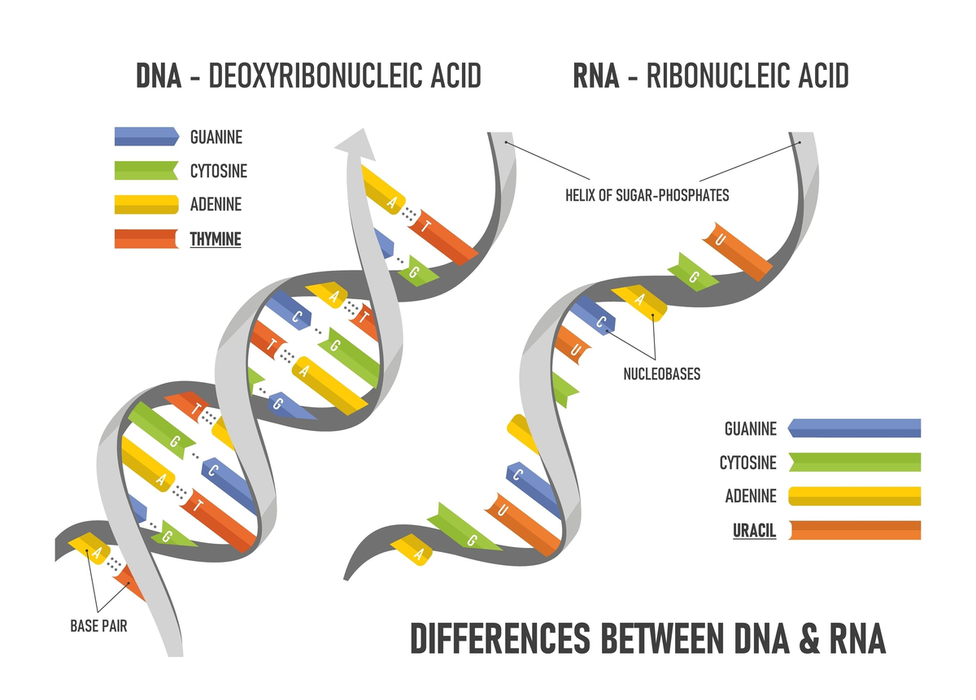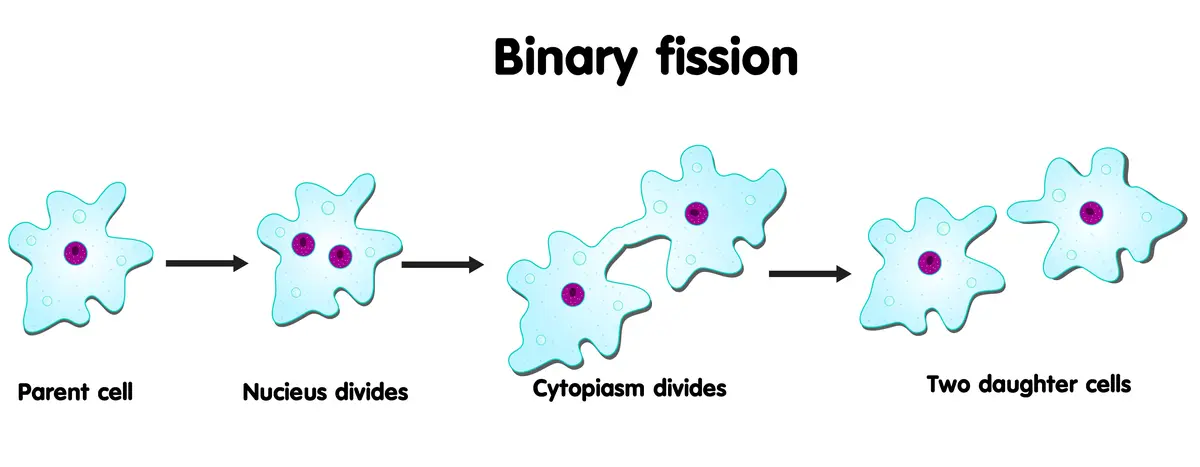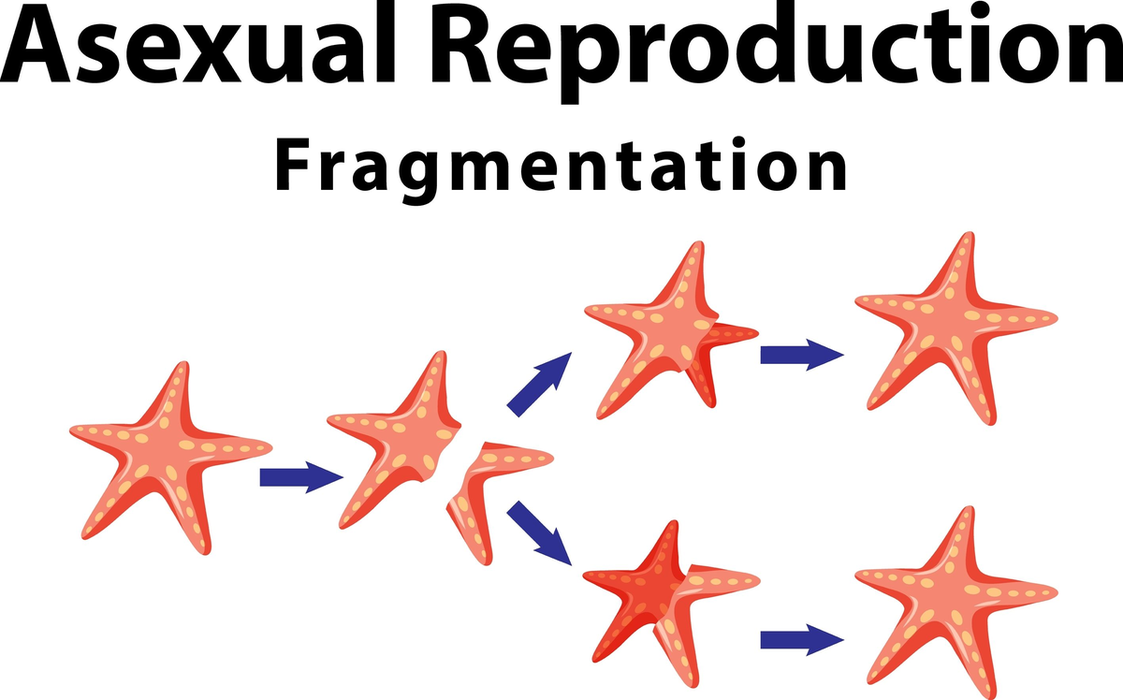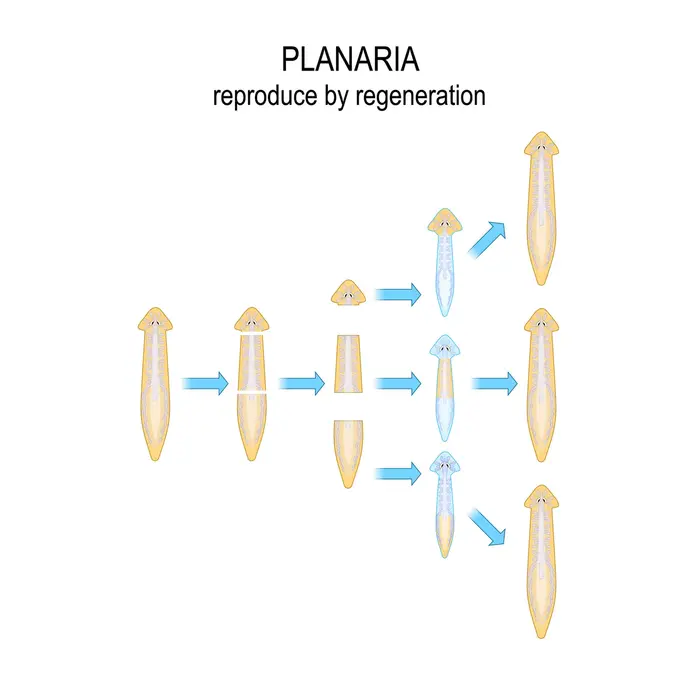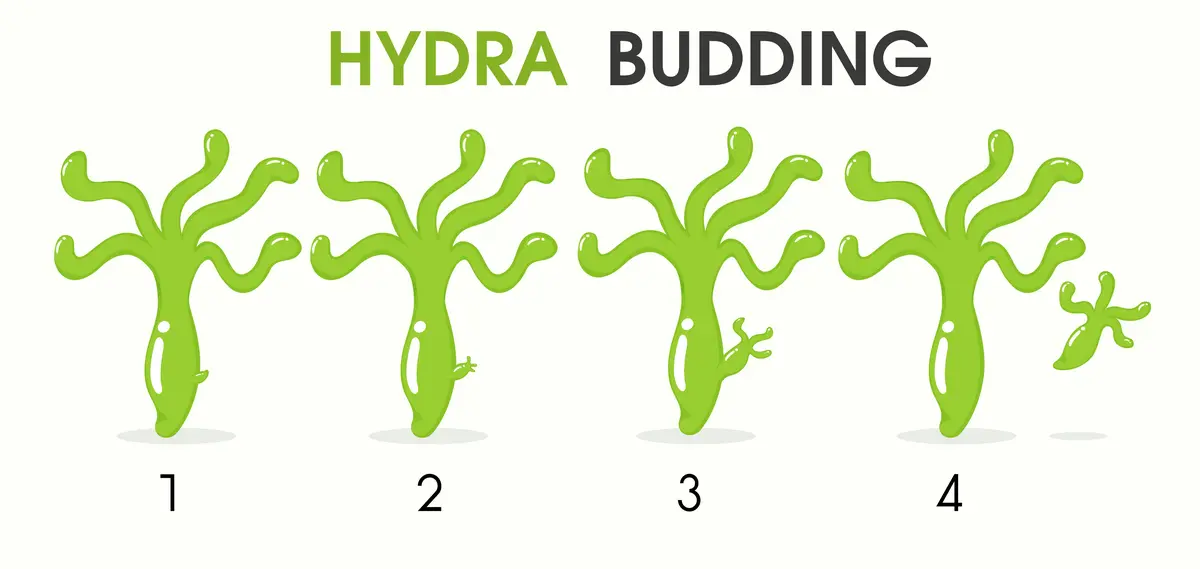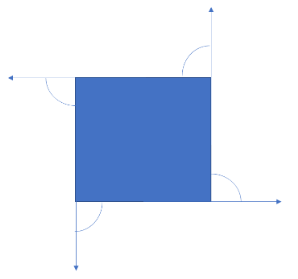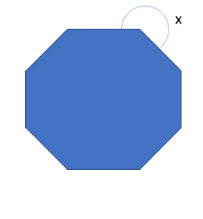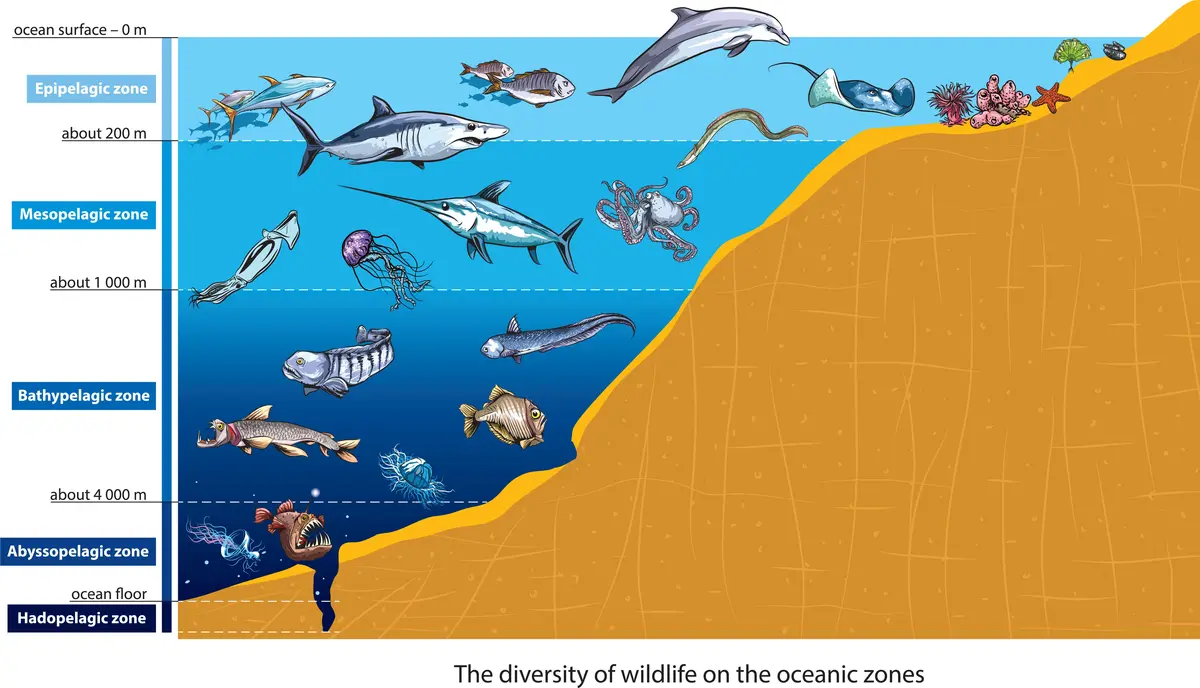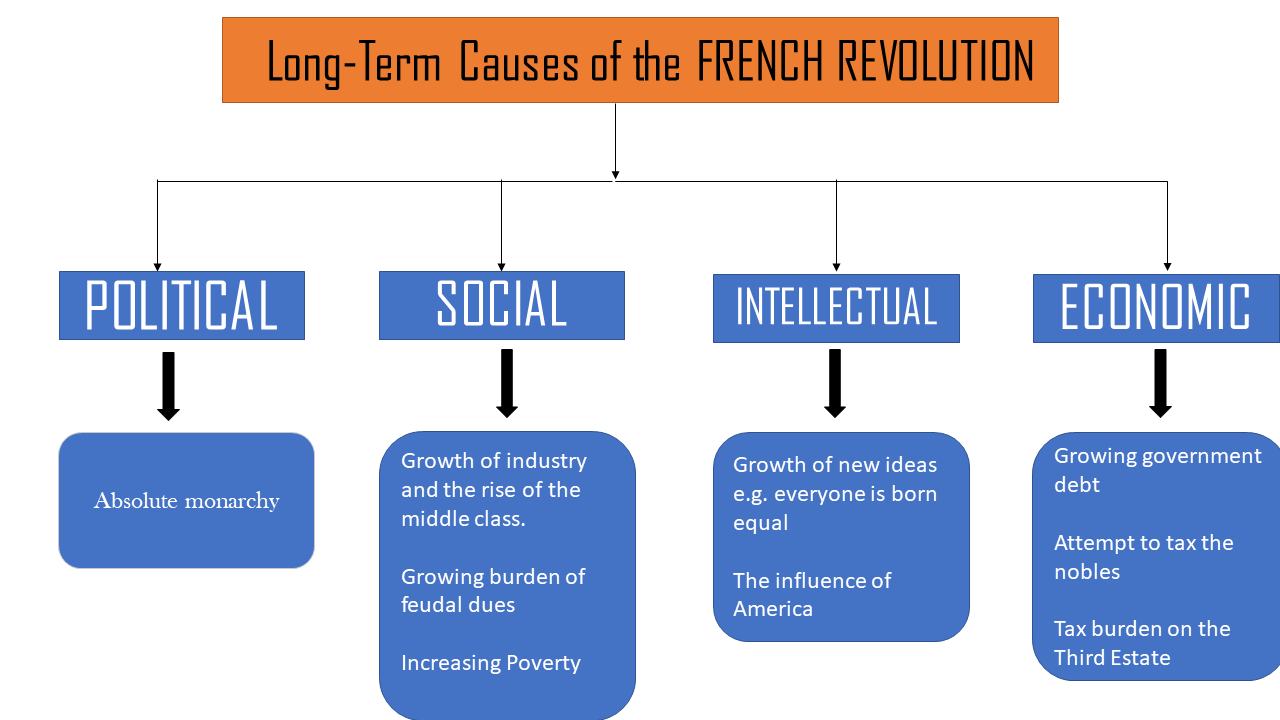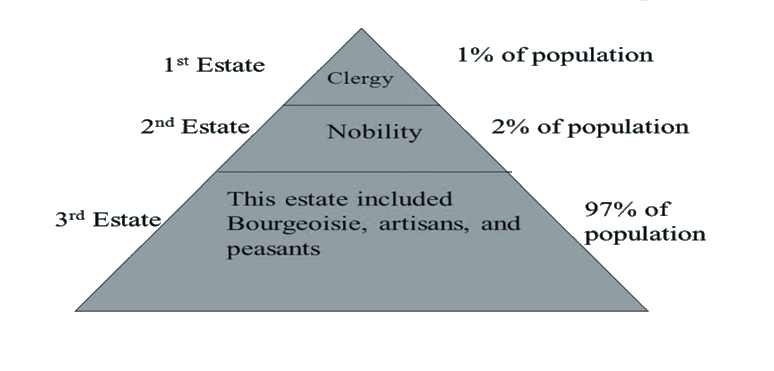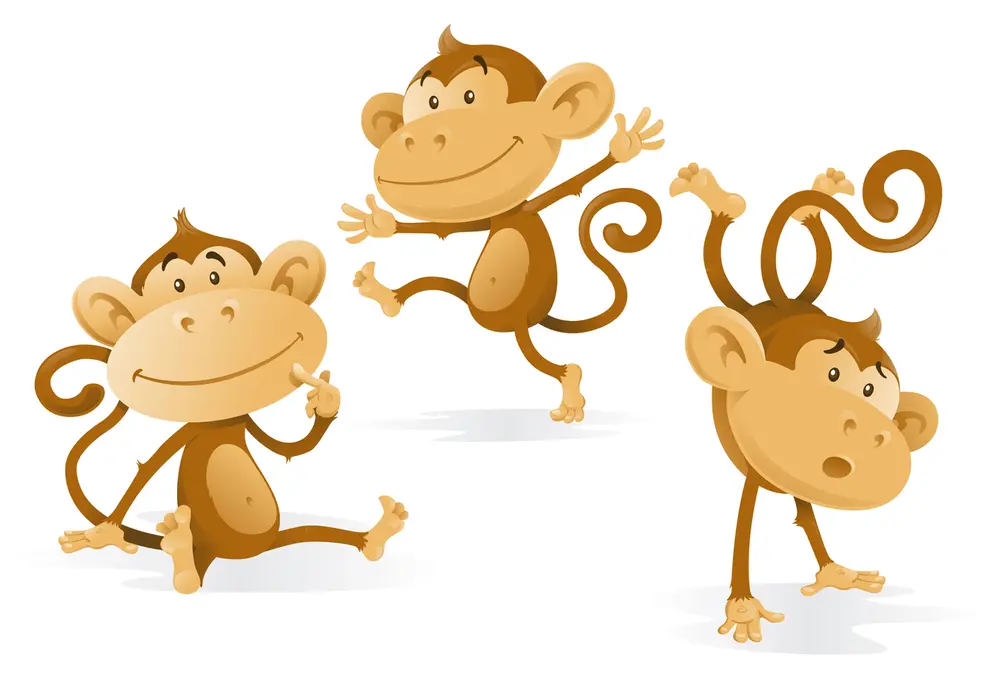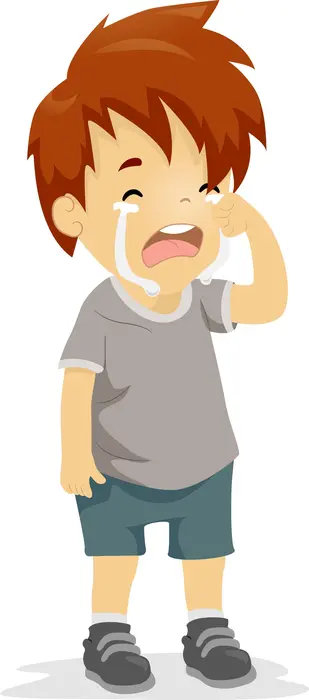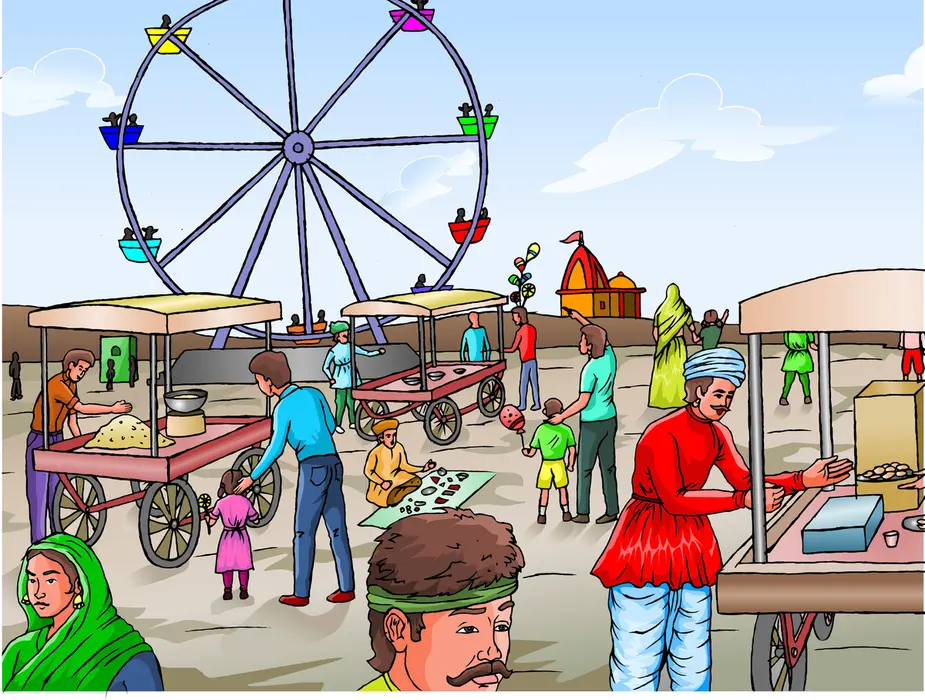Introduction
Plants can reproduce sexually or asexually in nature. The fusing of male and female sex cells, or gametes, is the primary mechanism for sexual reproduction in plants, as it is in all other species.Through the use of specialised structures such modified stems and roots, plants are capable of reproducing asexually. Human action, such as cutting off a plant’s parts and giving the cuttings favourable conditions to encourage the formation of roots, can also lead to asexual reproduction in plants .
Asexual Reproduction
In its most basic form, asexual reproduction in which the organism is simply divided into two and only single parent is involeved. This type of reproduction is without the formation of gametes. Here a single parent-cell divides, giving rise two daughter cells. The progenies thus born are genetically and physically identical to the parent cell. Single-celled organisms frequently employ this technique for reproduction
There are two ways:
Natural Asexual Reproduction
Under natural vegetative propagation, plants reproduce through natural asexual processes, which do not require human involvement. Following are natural ways of asexual reproduction in plants-
- Vegetative propagation:
Plants reproduce in this type of asexual manner without making seeds or spores. The plant instead relies on a few special parts that,under appropriate conditions, grow into new plants.These plant elements are-
- Rhizomes:Rhizomes are modified stems that can produce new plants by generating advententious roots and shoot systems at their nodes. Examples include bamboo and ginger.
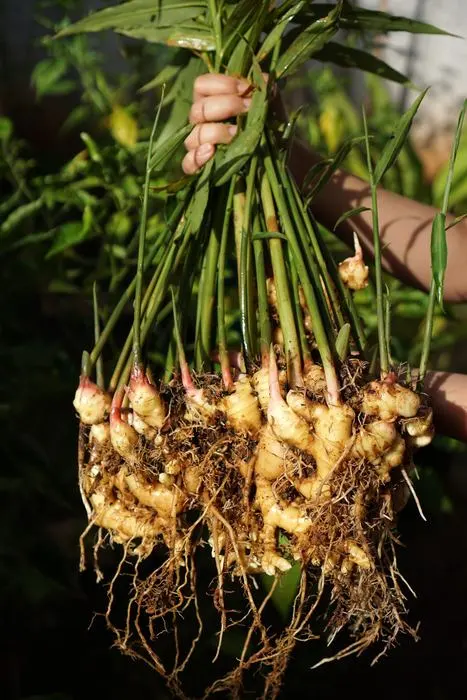
- Stolons: Stems that extend horizontally from the ground are called runners or stolons. New roots form at the nodes as they spread,thus eventually producing a new plant. Examples include strawberries, mint, etc.
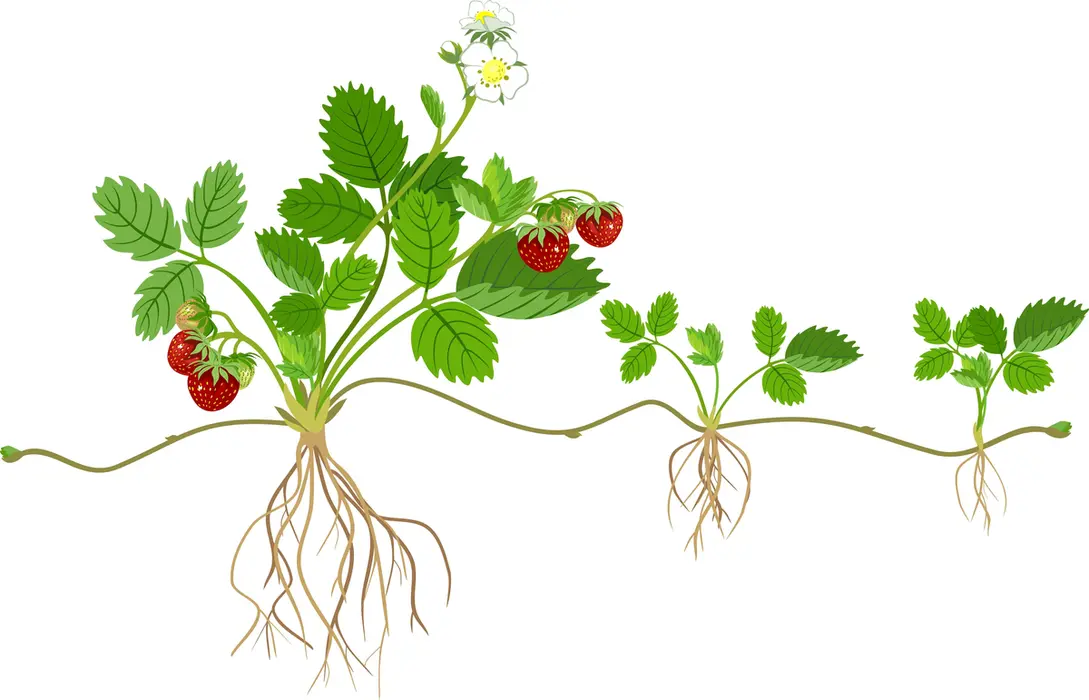
- Tubers: Known as stem tubers and root tubers, respectively, these are swollen stems or roots. The buds that are present on the surfaces of these modified parts can store enough nutrients to sustain the formation of a new plant. Potato and sweet potato are two examples.
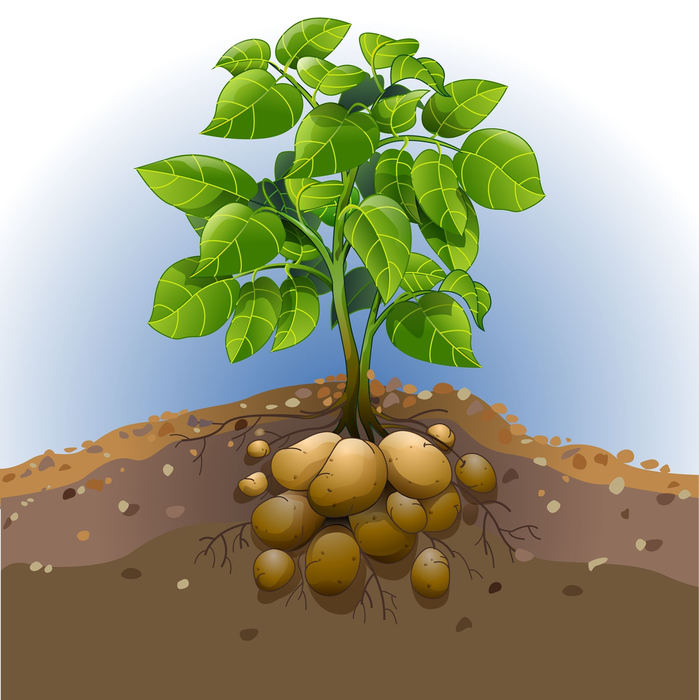
- Leaves: Some plants, such as Kalanchoe and Begonia, have plantlets on the margins of their leaves. These plantlets eventually grow roots and branches to form new plant systems.
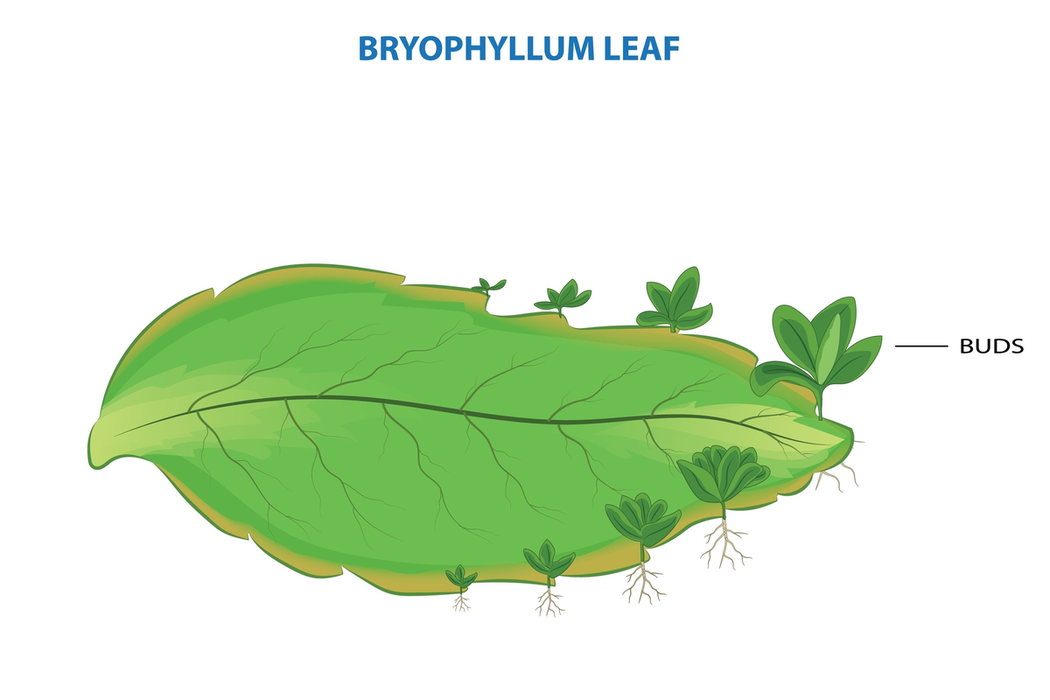
- Apomixis:
Asexual reproduction of flowering plants using seeds is called apomixis, also referred to as agamospermy. Following types of apomixis are:
- Nonrecurrent apomixis: In this sort of apomixis, the gametophyte or another haploid egg cell (haploid parthenogenesis) is used to form the embryo
- Recurrent apomixis: In this case, without fertilisation, the embryo sac develops from the diploid archesporium or a non-archesporial diploid cell of the gametophyte.
- Nucellar embryony: The embryo develops from cells of the integuments or diploid nucellar tissue. The resulting embryo is therefore also diploid.
Artificial Asexual Reproduction
Artificial asexual reproduction occurs under human intervention. Techniques like cutting, grafting, layering and tissue culture are considered types of artificial asexual reproduction.
- Cutting: In this method of propagation plant parts like the stem and leaves are cut and placed in the ground.These cut-off portions eventually develop into adventitious roots (from shoot cuttings) or adventitious shoots (from roots cuttings).When using leaf cuttings, adventitious roots and shoots can form. To promote the quick development of new roots in the cuttings, rooting hormones are frequently employed.
- Grafting:Grafting is removing the stem or other aerial parts of a plant and attaching them to the shoot of an another plant. The plant into which it is attached is known as the stock, and the cut-off portion is known as the scion. The cambial tissues of the two plants will eventually combine and develop into a single unit. For dicot plants that are botanically related, this method shows to be particularly effective. Bud or shoot grafting are two types of grafting.
- Layering: Layering is the act of bending a branch or stem and putting int into th soil, while it is still connected to its parent plant.The newly planted branch quickly forms adventitious roots and becomes a new plant.
Advantages of Asexual Reproduction
- The faster rate of offspring development is one of the most obvious benefits of asexual reproduction.
- Without being restricted to circumstances like gamete creation, gamete fusion, or seed generation, asexual reproduction techniques—whether natural or artificial—produce great outcomes, giving rise to a healthy plant under favourable conditions.
- Asexual reproduction permits limitless generation of genetically identical offspring. As a result, it is possible to grow a lot of young plants from a parent plant that possesses desired traits.
- Employing such plants that can develop by asexual ways of reproduction proves to be inexpensive, especially when cultivating plants on a commercial scale.
- The advantages provided by asexual propagation in the commercial production of plants include shorter times, no need for seeds, a favourable environment for pollination, seed dispersals, etc.
Disadvantages of Asexual Reproduction:
- Lack of genetic variety in the progeny and parent plants is one of the most important drawbacks of asexual reproduction.
- Due to this the spread of hereditary illnesses and undesirable traits will also increase.
- Furthermore, not all individuals are capable of carrying out artificial asexual reproduction procedures.
Summary
- Plants can reproduce asexually without the development of gametes or gamete fusion.
- Plants can reproduce asexually spontaneously or through human intervention.
- Various components, including tubers, bulbs, rhizomes, stolons, and plantlets, are used in natural asexual reproduction.
- Another form of asexual reproduction that utilises seeds is apomixis. Recurrent apomixis, non-recurrent apomixis, and nucellar embryony are different types of apomixis.
- Techniques like cutting, grafting, layering, and tissue culture are included under artificial asexual repoduction.
- Plants can reproduce asexually, which has benefits such not requiring seed formation and costing less time and money.
- The lack of genetic variation in the plants is the biggest drawback of asexual propagation.
You can also read our blog about asexual reproduction for more details.
Frequently Asked Questions
1.What is Plant Tissue Culturing?
Ans: This method entails the in vitro propagation of a chosen genotype by cultivating plant cells, tissues, or organs like roots, shoot tips, and leaves, in a synthetic nutritional medium, under precise chemical and physical conditions.Examples of plant tissue culture include callus, cell, protoplast, meristem, embryo and organ cultures. The plants obtained from this technique are called microplants.
2.What are bulbs and how they help in asexual reproduction?
Ans: Blubs are modified stems with concentrically organized fleshy leaves. These bulbs include a new shoot system that develops into an entire new plant. This new shoot system reveives its nutrietion from the surrounding by fleshy, scaly leaves. Onions, garlic, and shallots are a few of the well-known examples of plants that reproduce by developing new bulbs.
3.Enlist 3 hormones used in artificial propagation of plants.
Ans: The hormones used in artificial propagation of plants are-
- Auxin- Helps in root formation.
- Gibberllin- Increases height of plant.
- Cytokinins- Helps in shoot formation.


